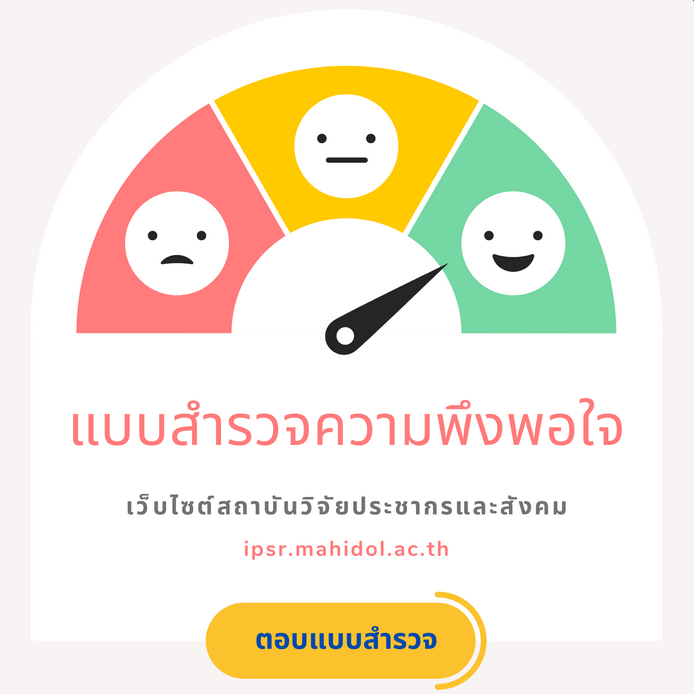|
Population of Thailand, 2016 (Vol.25 : January 2016) |
|
Estimated Population at Midyear 2016 (1st July) |
|
|
|
Male
|
Female
|
Total
|
|
1. |
Total Population (x 1,000) |
31,728 |
33,595 |
65,323 |
|
2. |
Population by Area of Residence (x 1,000) |
|
|
|
|
|
Urban area (population living in all types of cities and municipal areas) |
15,324 |
16,294 |
31,618 |
|
|
Rural area (population living outside urban areas) |
16,404 |
17,301 |
33,705 |
|
3. |
Population by Region (x 1,000) |
|
|
|
|
|
Bangkok Metropolis |
3,893 |
4,205 |
8,098 |
|
|
Central (excluding Bangkok Metropolis) |
8,993 |
9,557 |
18,550 |
|
|
Northern |
5,466 |
5,769 |
11,235 |
|
|
Northeastern |
9,038 |
9,524 |
18,562 |
|
|
Southern |
4,338 |
4,540 |
8,878 |
|
4. |
Population by Age Group (x 1,000) |
|
|
|
|
|
Children (under 15 years) |
5,950 |
5,691 |
11,641 |
|
|
Labor force (15-59 years) |
20,955 |
21,944 |
42,899 |
|
|
Elderly (60 years and over) |
4,823 |
5,960 |
10,783 |
|
|
Elderly (65 years and over) |
3,151 |
4,053 |
7,204 |
|
|
Pre-school ages (0 – 5 years) |
2,275 |
2,175 |
4,450 |
|
|
School ages (6-21 years) |
6,874 |
6,627 |
13,501 |
|
|
Women of reproductive age (15-49 years) |
|
16,968 |
|
|
5. |
Life Expectancy at Birth
(average number of years a person could expect to live after birth) |
Male 71.8 years
Female 78.6 years |
|
6. |
Life Expectancy at Sixty
(average number of years a person could expect to live after age sixty) |
Male 20.1 years
Female 23.4 years |
|
7. |
Life Expectancy at Sixty-five
(average number of years a person could expect to live after age sixty-five) |
Male 16.4 years
Female 19.3 years |
|
8. |
Vital Rates |
|
|
|
|
|
Crude birth rate (per 1,000 population) |
|
|
11.9 |
|
|
Crude death rate (per 1,000 population) |
|
|
8.0 |
|
|
Natural growth rate (percent) |
|
|
0.4 |
|
|
Infant mortality rate (per 1,000 live births) |
|
|
10.3 |
|
|
Child mortality ratio (per 1,000 live births) |
|
|
17.1 |
|
9. |
Total Fertility Rate (average number of children a woman would have throughout her reproductive years) |
|
|
1.6 |
|
10. |
Contraceptive Prevalence Rate (percent) |
|
|
79.3 |
|
11. |
Number of Housholds (x 1,000) |
|
|
22,065 |
|
|
|
-
Population in Listing 1-4 : Thais and non-Thais whose names are in household registration.
-
Crude Birth Rate (per 1,000 population) : Number of births in one year divided by midyear population and multiplied by 1,000.
-
Crude Death Rate (per 1,000 population) : Number of deaths in one year divided by midyear population and multiplied by 1,000.
-
Natural Growth Rate (percent) : Number of births minus number of deaths divided by midyear population and multiplied by 100.
-
Infant Mortality Rate (per 1,000 live births) : Number of deaths of infants under age 1 in one year divided by total live births in that year and multiplied by 1,000.
-
Child (under 5) Mortality Ratio (per 1,000 live births) : Number of deaths of children under age 5 in one year divided by total live births in that year and multiplied by 1,000.
-
Total Fertility Rate (TFR) : Average number of children a woman would have throughout her reproductive years, calculated by summing the age-specific fertility rates of women of reproductive age.
-
Contraceptive Prevalence Rate : Percent of currently married women age 15 – 49 using contraception.
-
Households :Private household in which one or more persons living in the same residents and using common
living facility.
|
|
